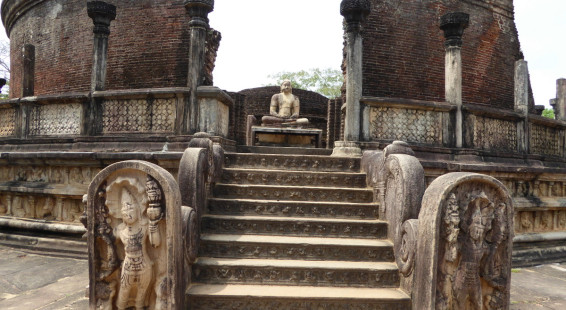
The medieval ruins of Polonnaruwa are located in east-central Sri Lanka.
During my last trip to Sri Lanka I revisited Polonnaruwa as I’d only been there on one prior occasion. During that prior visit, Polonnaruwa was at the fringes of the front in the country’s lingering Civil War, and not considered safe, so we didn’t stay any longer than necessary to visit the highlights of the ruined city.
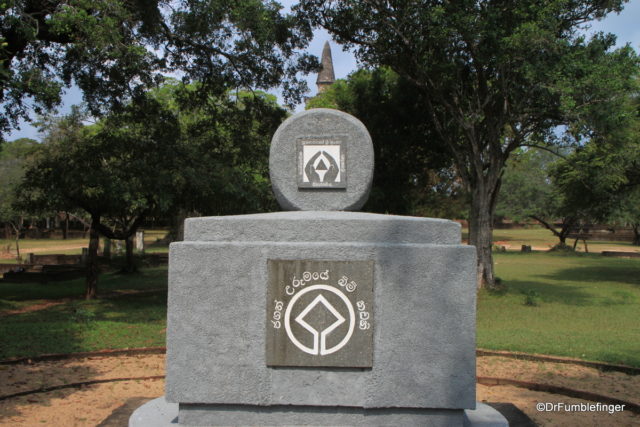
UNESCO Marker, Polonnaruwa, Sri Lanka
This trip was done at a more relaxed pace. We spent two nights in the Polonnaruwa at a charming small hotel adjacent to the ruins, got to celebrate Sri Lankan New Year with the hotel owners, staff and guests, and I had a leisurely day to explore the ruins.
Polonnaruwa is part of Sri Lanka’s Cultural Triangle, a region of ancient cities in Central Sri Lanka that’s fascinating to explore. There are several individual UNESCO World Heritage sites in this triangle, Polonnaruwa being one of them. This city was built in the 11th century after the old capital at Anuradhapurna was plundered and destroyed by armies from India in 993 AD.
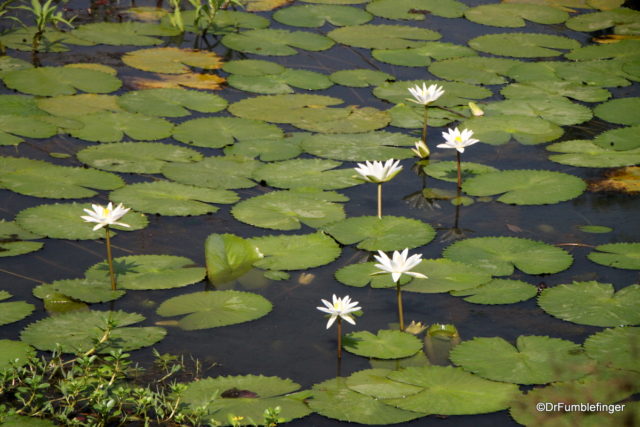
Polonnaruwa, Sri Lanka
The grounds of Polonnaruwa are vast and provide room for nature to co-exist amongst the ruins, including a variety of mammals, birds, and some wetlands.
There are about a dozen major groupings of ruins to visit, most separated by some distance. While it’s possible for Polonnaruwa to be explored on foot, it’s a hot city and it’s nice to have a car (or at least a bike) to get around.
Here are some of the highlights of this visit:
1) Royal Palace Complex:
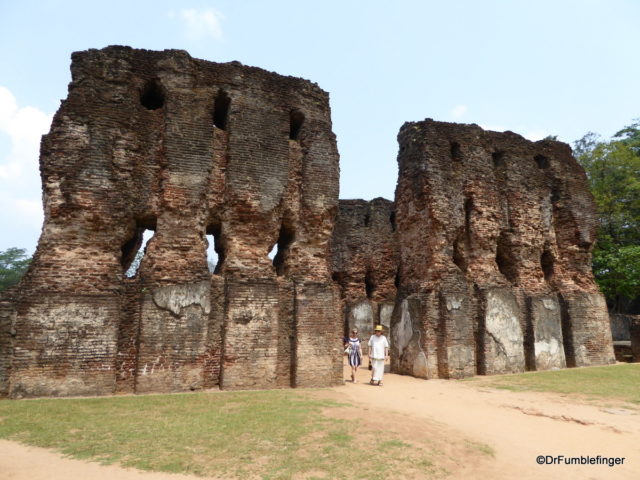
King’s Palace Ruins, Polonnaruwa
The thick-walled ruins of this large palace are very impressive to see, and apparently the wooden structure of the palace extended several stories above these walls, but this is all that remains.
Nearby you’ll find a nicely preserved royal bath, the Kumara Pokuna,
Some of the carvings in the Royal Audience Hall – especially the lions at the entrance and the carefully carved pillars — speak of true craftsmanship.
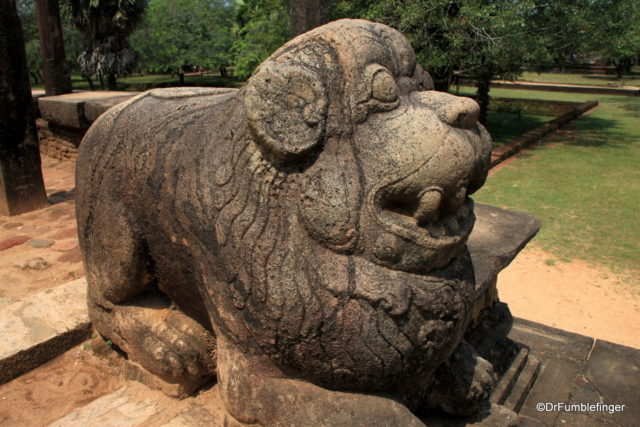
Lion outside the Council Chamber, Polonnaruwa
2) Gal Vihara
Without question, the most amazing art within this ruined city are the massive Buddhas of the Gal Vihara, delicately carved into a massive granite boulder. I spent a full hour studying these carvings as I realized I’ll likely never see them again. I studied and photographed them from different angles, and off to the side watching the Sri Lankan people approaching them with awe and reverence. I’ll share more photos and information on this amazing grouping with you soon , but for now I wanted to provide you with these images.

Gal Vihara in Polonnaruwa
The standing Buddha figure is 7 m (23 ft) tall. Next to it is a 14 m (46 ft) reclining Buddha, both carved with fine detail. The seated Buddha statue is also a beautiful sculpture.
3) The Quadrangle
The most sacred area of the ruined city lies within a squared off section measuring only about 100 m across, within which is a tight cluster of structures.

Quadrangle. Polonnaruwa
I found the most interesting construct in the Quadrangle to be the Vatadage. This is a circular structure with beautiful art and symmetry. There are four access stairs, each with a pair of guard stones and moonstones at the base of the stairs. Sitting atop the flight of stairs is a Buddha statue.
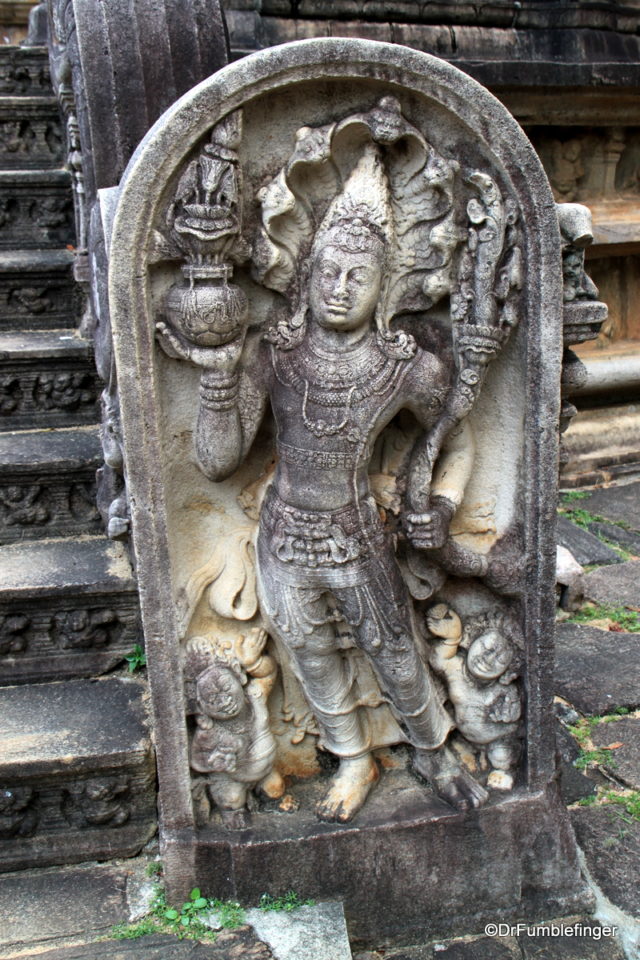
Guard stones, Quadrangle. Polonnaruwa
The Hatadage and Atadage are structures within the Quadrangle related to the sacred Buddha tooth relic — Sri Lanka’s most prized possession — which today resides in a secure chamber of the temple in Kandy. Both the Hatadage and Atadage are multistoried structures almost a thousand years old, but like much of the ruined city, only the stone framework of these buildings remains.
The Mandapaya is know for its elegantly carved pillars. It was thought to have been a place where Buddhist monks chanted.
4) The Rankoth Vehera is the largest dagoba in Polonnaruwa, measuring 550 ft in circumference. It is surrounded by image houses (containing Buddha statues) and alters for flowers.
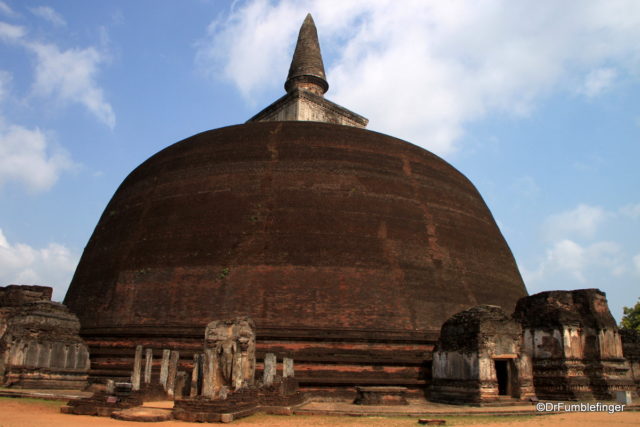
Rankoth Vehera in Polonnaruwa
5) The Kiri Vehera is a white stupa which is know for it’s lovely proportions. It is very well preserved and remains of the royal family have been found in mounds around this structure.
6) The Pabalu Vehera (below) is one of the older structures in the city, probably around a thousand years old.
Your eyes likely are starting to glaze over with all there is to see in this city, but I want to leave with a few final photos.

Shiva Devale, Polonnaruwa
6) I was fascinating to find several Hindu-type temples in this distinctly Buddhist medieval city. There are two Shiva Devale in Polonnaruwa, dedicated to the Hindu God Shiva, believed to date to the 11th and 12th centuries. In front of one is a statue of a bull, Shiva’s messenger.
There’s a lot more to see and experience in this ancient city, but I found these to be the highlights. I love exploring the ruined old cities of Sri Lanka for there really is nothing quite like them anywhere else.
(Click on thumbnails to enlarge, right arrows to advance slideshow)